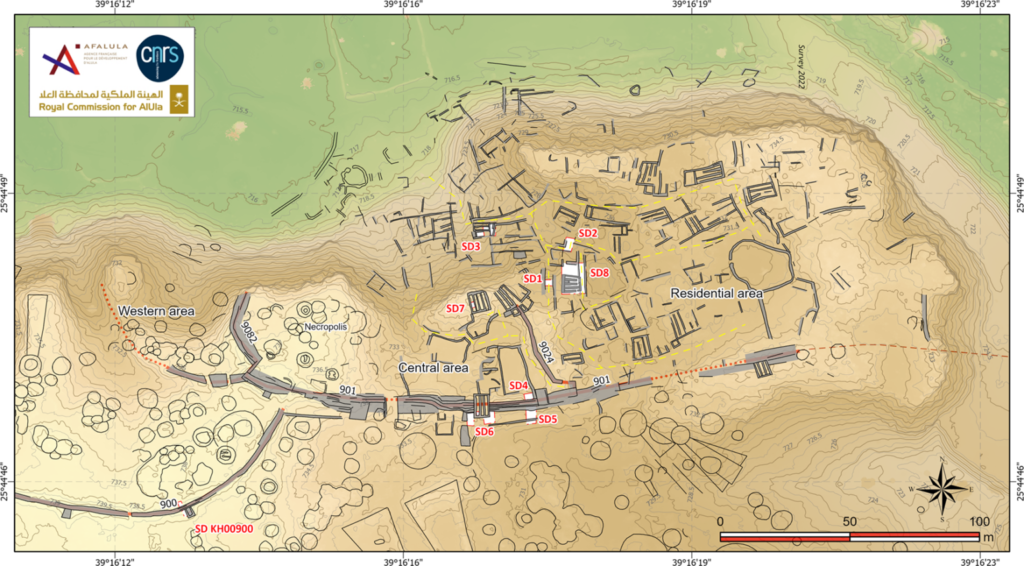Archaeologists have discovered the remains of an ancient fortified town called al-Natah hidden in an oasis in Saudi Arabia.
Radiocarbon dating indicates the town was inhabited 4000 years ago during the early Bronze Age, around 2400 BC.
It was located within the walled oasis of Khaybar in northwest Saudi Arabia and covered an area of about 2.6 hectares.
The town was home to up to 500 residents and had around 50 houses constructed around a hill within its own defensive wall.
Remains found include house foundations, tombs containing weapons and stones, and fragments of simple pottery, suggesting a relatively egalitarian society.

The size of the ramparts and town indicate it was an important local authority at the time, when life was transitioning from nomadic to more settled.
This discovery provides evidence of an indigenous form of “slow urbanism” in northwest Arabia 4000 years ago, with fortified oases contacting each other amidst nomadic populations.

Al-Natah was an early example of the beginnings of settled occupation and urban development in the region, following a different path than major cities further east.
Source: ScienceAlert









